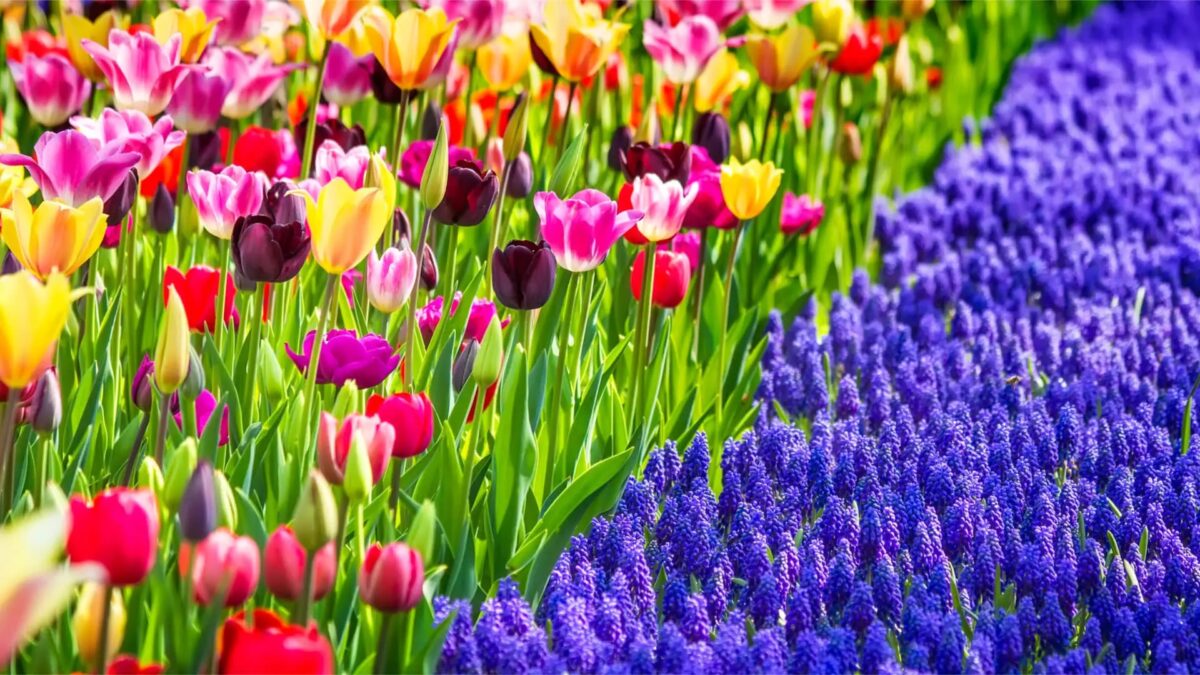Color affects our moods, emotions, spiritual and physical well-being. Likewise, color reflects our personalities. It also has a significant effect on everything we eat, drink, and touch. It influences our physical environment, including our home, office, and garden.
The colors we prefer for home interiors carried out in the garden, provide continuity between our interior and outdoor living spaces. Colors are a valuable tool in creating different moods in the landscape. To effectively create with color, it is vital to understand their individual meaning.
Green represents growth
It is a primary healing color. Green foliage alone will create a tranquil impression. It is restful and relaxing as it offers sanctuary from the outside world. Using foliage colors and architectural leaves gives structure and form to any garden space.
- Plant options for shady areas include hostas coleus, and ferns.
- Plant options for sunny areas include conifers, grasses, and junipers, grasses, and conifers.
Materials you can use to augment plantings include the use of green wood stain on buildings and fences. It is a popular color for garden furniture, glazed pots, garden ornaments, and umbrellas.
Blue represents spirit
The color blue is particularly useful when it comes to meditation and combines well with many other colors. It conveys the peacefulness of the ocean and sky. Use Blue colors for modern-day anxiety and stress. Blue flowers contribute powerful healing vibrations and depth to a border filled with white, lilac, and pink flowers.
- Plant options for shady areas include columbine and campanula.
- Plant options for sunny areas include morning glory, lobelia, and delphinium.
Materials you can use to augment plantings include the use of paving, deep blue-grey slate, ceramics, and granite with vivid blue glazes.
Red represents vitality
It tends to demand attention and will make areas appear smaller. Red is often used in areas as it stimulates the appetite. It creates a feeling of warmth, movement, and drama. For those who may find it too intense, use pink as an alternative.
- Plant options for the shady areas include begonia, impatiens, and coleus.
- Plant options for in sunny areas include verbenas or salvia.
Material you can use to augment your plantings includes the use of glazed pots, red sandstone gravel, red clay bricks, or tiles that compliment that vitality to your landscape.
Violet represents calm
It brings a sense of self-worth. It sometimes appears characterless unless plenty of contrast in tone, texture, and form is incorporated. Violet flowers are especially helpful for the protection and for the purifying vibrations they give out. Violet is a rich regal color that indicates knowledge, self-respect, spirituality, nostalgia, dignity, and wealth. It will help calm the mind if you are tense.
- Plants options for shady areas include impatiens and coleus.
- Plant options for sunny areas include butterfly bush, salvia, and aster.
Materials you can use to augment planting include the use of glazed pots, dyed fabrics used on garden furniture, and umbrellas.
Orange represents optimism
It is the color of joy. It is warm, welcoming, just bursting with earthly energy. Orange flowers have been known since ancient times as a cure for depression. Likewise, it is a good color to use when you have experienced trauma or loss.
- Plant options for shady areas include begonia, coleus, and impatiens.
- Plant options for sunny areas include marigolds and honeysuckle.
Materials you can use to augment plantings include the use of ornaments, terracotta pots, golden gravel, clay bricks, and rusting metal.
Yellow represents contentment
It symbolizes the power of the sun, increases the feeling of space. It brings a sense of well-being to the garden even on grey, dull days. Even so, golden foliage will often scorch in full sun, so plant in dappled shade. Many of the grey or silver-leafed plants have yellow flowers.
- Plants options for shady areas include coleus, hostas, and begonias.
- Plant options for sunny areas include potentilla, daylilies, and yarrow.
Materials you can use to augment plantings include the use of ornaments, golden sandstone gravel, buff paving, and reconstituted stone containers.

